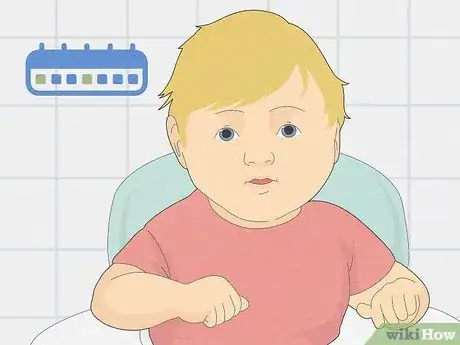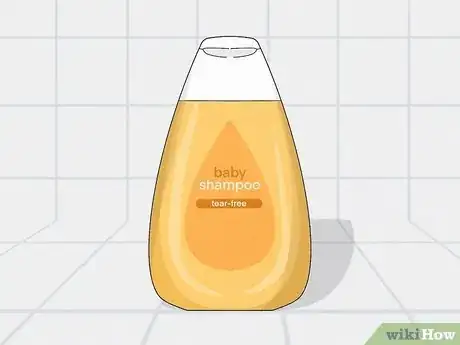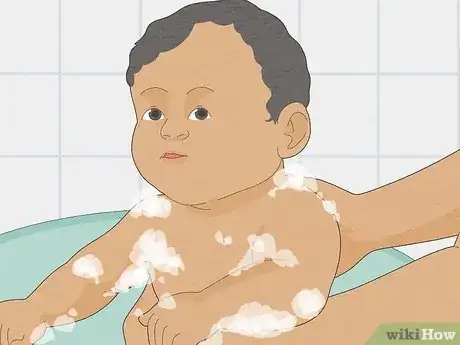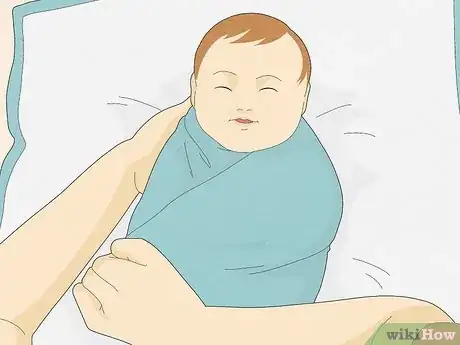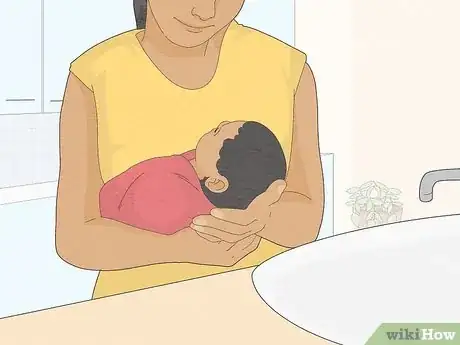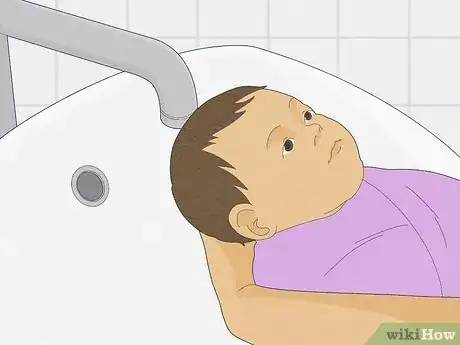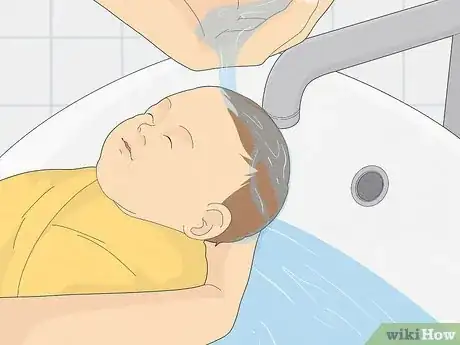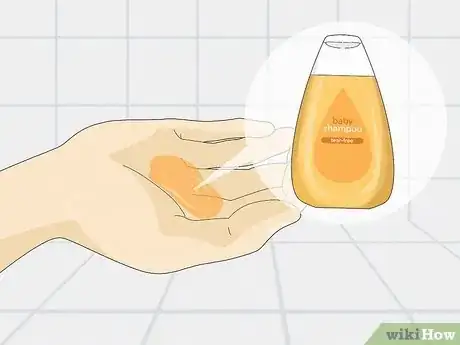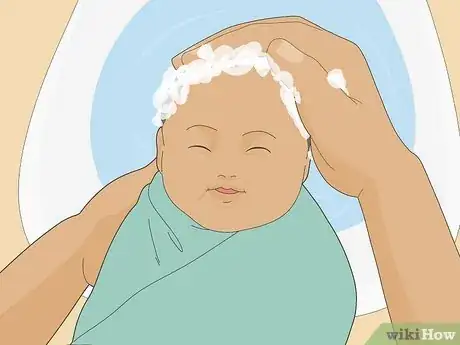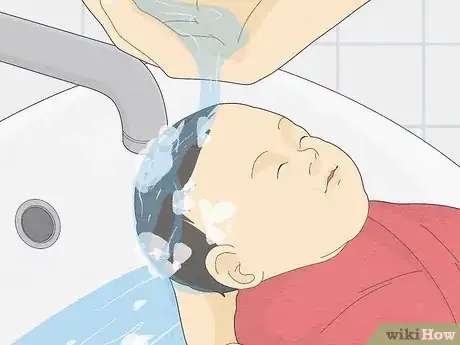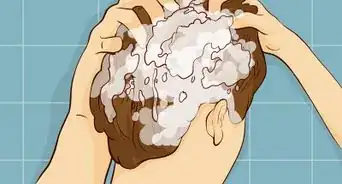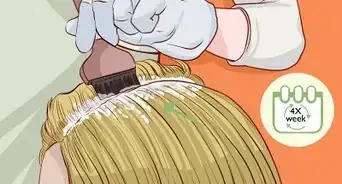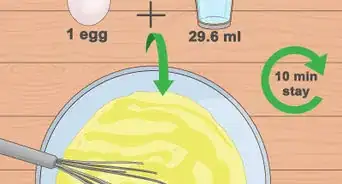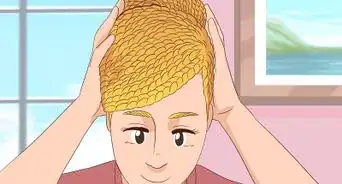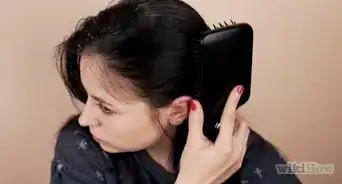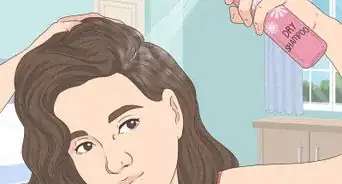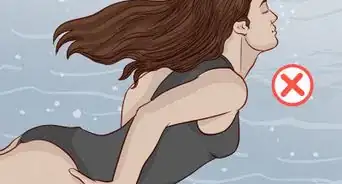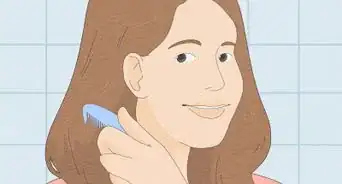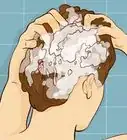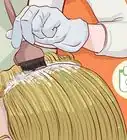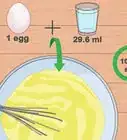This article was co-authored by Andrea Rudominer, MD, MPH. Dr. Andrea Rudominer is a board certified Pediatrician and Integrative Medicine Doctor based in the San Francisco Bay Area. Dr. Rudominer has over 15 years of medical care experience and specializes in preventive health care, obesity, adolescent care, ADHD, and culturally competent care. Dr. Rudominer received her MD from the University of California, Davis, and completed a residency at the Lucile Packard Children's Hospital at Stanford University. Dr. Rudominer also has an MPH in Maternal Child Health from the University of California, Berkeley. She is a Member of the American Board of Pediatrics, a Fellow of the American Academy of Pediatrics, a Member and Delegate of the California Medical Association, and a Member of the Santa Clara County Medical Association.
This article has been viewed 21,125 times.
Washing your baby's hair is more involved than it may initially seem. It is a difficult balancing act between making sure your baby is comfortable and ensuring the hair is actually cleaned.
Steps
Preparing Your Baby for a Wash
-
1Know that your baby's hair should not be washed every day. Since babies do not exercise or get as dirty as adults, their hair is also generally cleaner. Wash your baby's hair around 2 times a week.[1]
- Of course, if the hair is visibly dirty, you should wash the hair.
-
2Purchase a shampoo which is not too hard on the skin as babies are much more sensitive than adults. If the bottle says "tear-free," it may be a good choice.[2]
- It would be best to ask your pediatrician what he/she recommends since the stores can be confusing.
- It may also be a good idea to purchase a non-scented shampoo so that the baby does not object to the smell.
Advertisement -
3Be sure to wash your baby's body before beginning their hair. Babies can become cold very quickly so heat your child up by cleaning their body first.[3]
- When you're bathing your baby, use a small tub that either sits on the counter or inside a bigger tub, and fill it up with lukewarm water..[4]
- This will also help make your baby more comfortable and hopefully more cooperative.
Washing the Hair
-
1Take your baby out of the tub and wrap him/her in a warm, dry towel. Do not wrap it so tight that your baby is uncomfortable but make sure it is snug.[5]
- Try to fold your baby's arms across their chest before wrapping the towel around. This is a comfortable position for the baby to be in and will help them be more cooperative.
-
2Position yourself so that you can safely hold your baby over the tub or sink. Consider your baby's stage of development. Many infants will require you to support their neck and head while being held and washed. Look at how to hold a baby properly if you do not know how already.[6]
- If the tub or sink is below your waist, kneel down next to the tub.
- If your baby isn't big enough to hold their head up, try using a supportive sling inside their baby tub while you wash their hair.[7]
-
3Hold your baby so that only his or her head is over the tub. This will allow you to wash the hair while keeping the rest of the body dry.
- This step may be easier if you wash your baby over a sink instead. This will only work, though, if the baby is small enough to be held over a sink.
-
4Use either a cup or your palm to gently pour lukewarm water over your baby's hair. Keep on doing so until all of your baby's hair is wet. The water should be warm enough to feel the heat but not so hot that it hurts to touch. Find a temperature comfortable for you and then make it slightly colder for your baby.[8]
- Take care not to let any water get to your baby's ears or eyes. This will be uncomfortable for the baby just as it is for you.
- Try to angle your baby's head slightly back so that the water will flow away from the eyes and ears.
-
5Take a small amount of shampoo into your palm. The amount will depend on the thickness of your baby's hair, but try not to use more than the size of a quarter.[9]
- You will need to set your baby down or hand him/her off to another person for this step.
- Use non-toxic, gentle shampoo, but still be careful not to get the shampoo in your bayb's eyes.[10]
-
6Gently lather up your baby's head with the shampoo. Use gentle, circular motions to create a small amount of lather. Use the tips of your fingers to massage and clean the scalp. Do not run your fingernails along the scalp, though.[11]
- You should only need to shampoo their hair for around 20-30 seconds since the hair will not be too dirty or sweaty.
-
7Wash the shampoo out of your baby's hair using the same method as in step 6. You may need to use more water in order to remove all of the shampoo.
- Try to gently run your hand through your baby's hair to make sure all of the shampoo is gone.
-
8Grab your washcloth to dry your baby's hair. Do not dry too vigorously. Try to palm your baby's head and move your hand in slow circles while holding the base of the head and the neck.
- Try to use a warm washcloth to help soothe the baby.
Expert Q&A
-
QuestionHow can I make sure I'm being safe when I wash my baby's hair?
 Andrea Rudominer, MD, MPHDr. Andrea Rudominer is a board certified Pediatrician and Integrative Medicine Doctor based in the San Francisco Bay Area. Dr. Rudominer has over 15 years of medical care experience and specializes in preventive health care, obesity, adolescent care, ADHD, and culturally competent care. Dr. Rudominer received her MD from the University of California, Davis, and completed a residency at the Lucile Packard Children's Hospital at Stanford University. Dr. Rudominer also has an MPH in Maternal Child Health from the University of California, Berkeley. She is a Member of the American Board of Pediatrics, a Fellow of the American Academy of Pediatrics, a Member and Delegate of the California Medical Association, and a Member of the Santa Clara County Medical Association.
Andrea Rudominer, MD, MPHDr. Andrea Rudominer is a board certified Pediatrician and Integrative Medicine Doctor based in the San Francisco Bay Area. Dr. Rudominer has over 15 years of medical care experience and specializes in preventive health care, obesity, adolescent care, ADHD, and culturally competent care. Dr. Rudominer received her MD from the University of California, Davis, and completed a residency at the Lucile Packard Children's Hospital at Stanford University. Dr. Rudominer also has an MPH in Maternal Child Health from the University of California, Berkeley. She is a Member of the American Board of Pediatrics, a Fellow of the American Academy of Pediatrics, a Member and Delegate of the California Medical Association, and a Member of the Santa Clara County Medical Association.
Board Certified Pediatrician & Integrative Medicine Doctor I recommend using a small tub that either sits on the counter or inside a bigger tub. Fill the tub up with lukewarm water. Depending on the age of the baby, they may be able to hold their head up themselves, but if not, you can add a supportive sling in the tub for them to rest on. Tilt the baby's head back gently and use a cup to wet their hair, then wash their hair with a gentle, non-toxic shampoo. When you're finished, tilt your baby's head back and use the cup of water to wash the soap back out. That will keep the soap from getting into their eyes.
I recommend using a small tub that either sits on the counter or inside a bigger tub. Fill the tub up with lukewarm water. Depending on the age of the baby, they may be able to hold their head up themselves, but if not, you can add a supportive sling in the tub for them to rest on. Tilt the baby's head back gently and use a cup to wet their hair, then wash their hair with a gentle, non-toxic shampoo. When you're finished, tilt your baby's head back and use the cup of water to wash the soap back out. That will keep the soap from getting into their eyes.
Warnings
Things You'll Need
- A tub
- Baby shampoo
- A washcloth
- A towel
References
- ↑ https://www.babycentre.co.uk/a37/bathing-your-baby
- ↑ https://www.webmd.com/parenting/baby/baths-hair-and-nails#1
- ↑ https://wa.kaiserpermanente.org/healthAndWellness/index.jhtml?item=%2Fcommon%2FhealthAndWellness%2Fpregnancy%2Fnewborn%2FnewbornCare3.html
- ↑ Andrea Rudominer, MD, MPH. Board Certified Pediatrician & Integrative Medicine Doctor. Expert Interview. 6 May 2020.
- ↑ https://wa.kaiserpermanente.org/healthAndWellness/index.jhtml?item=%2Fcommon%2FhealthAndWellness%2Fpregnancy%2Fnewborn%2FnewbornCare3.html
- ↑ https://wa.kaiserpermanente.org/healthAndWellness/index.jhtml?item=%2Fcommon%2FhealthAndWellness%2Fpregnancy%2Fnewborn%2FnewbornCare3.html
- ↑ Andrea Rudominer, MD, MPH. Board Certified Pediatrician & Integrative Medicine Doctor. Expert Interview. 6 May 2020.
- ↑ https://www.nhs.uk/conditions/pregnancy-and-baby/washing-your-baby/
- ↑ https://www.webmd.com/parenting/baby/baths-hair-and-nails#1
- ↑ Andrea Rudominer, MD, MPH. Board Certified Pediatrician & Integrative Medicine Doctor. Expert Interview. 6 May 2020.
- ↑ https://www.webmd.com/parenting/baby/baths-hair-and-nails#1
